Andromeda Galaxy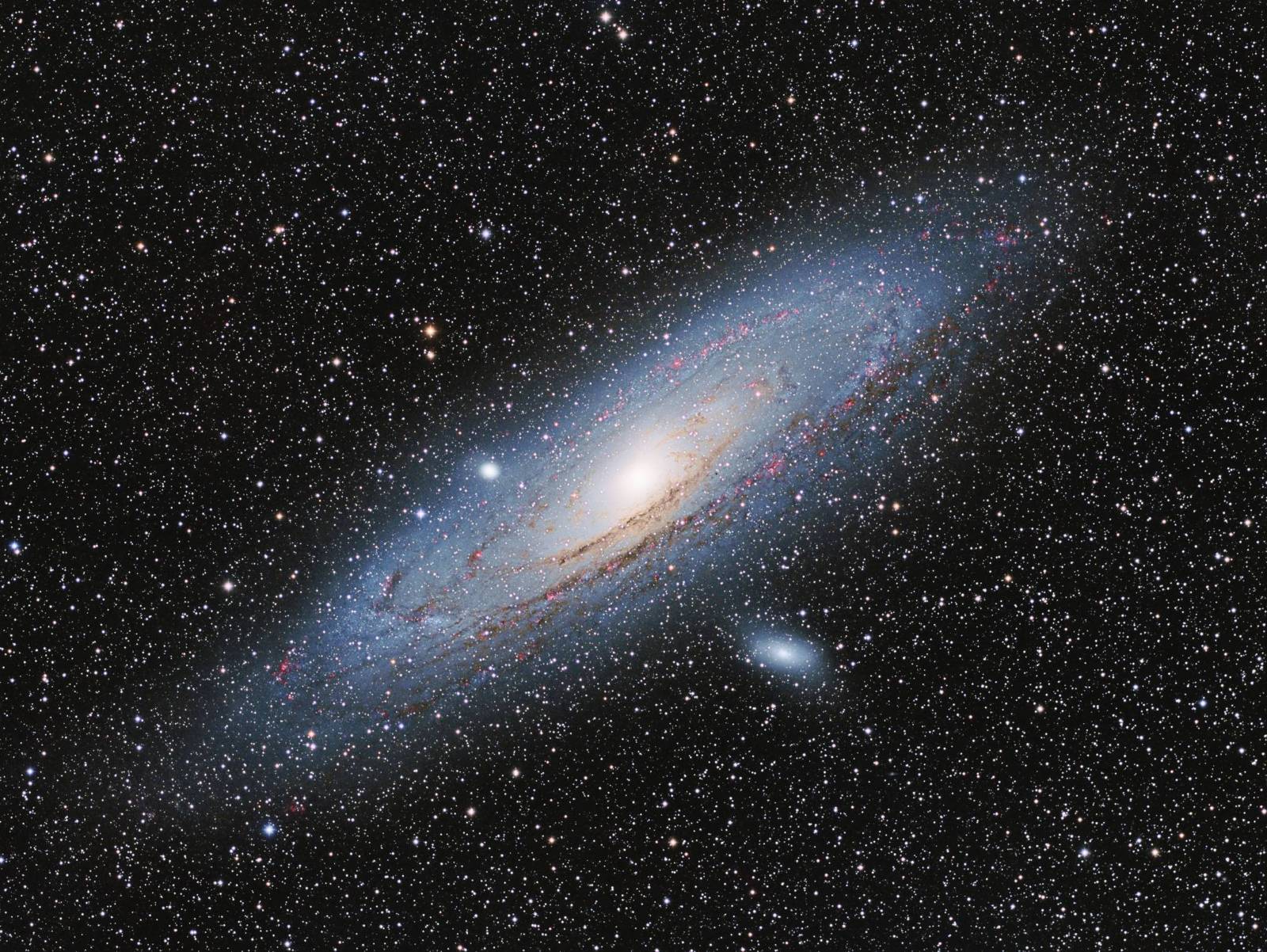
Click image for full size version
December 5, 2016 – First light with Takahashi FSQ-106; Journal of the Royal Astronomical Society of Canada, Feb. 2017
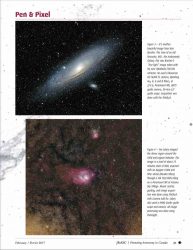 This image shows the iconic Andromeda galaxy. Most people are familiar with it – Apple even has a desktop background that features it. It’s visible to the naked eye from my house at this time of year, and is a delight in binoculars, small and large telescopes and in images. I first imaged Andromeda with a 1-shot colour camera in 2009 during the Huronia Star Party, and again in 2014, but this new shot shows much more depth, detail and colour.
This image shows the iconic Andromeda galaxy. Most people are familiar with it – Apple even has a desktop background that features it. It’s visible to the naked eye from my house at this time of year, and is a delight in binoculars, small and large telescopes and in images. I first imaged Andromeda with a 1-shot colour camera in 2009 during the Huronia Star Party, and again in 2014, but this new shot shows much more depth, detail and colour.
The Andromeda Galaxy is thought to be quite similar to our own Milky Way galaxy. The two are the largest galaxies of the cluster we are in, known as The Local Group. It lies about 2.5 million light years from us — pretty close. In fact, Andromeda and the Milky Way will eventually merge. This shot shows star clusters, nebula and dust lanes in the Andromeda galaxy. The galaxy’s tips extend almost right into the corners of this image, has a diagonal of about 4 degrees across (about 8 moon widths). The galaxy to the lower right of M31 is M110. This shot shows some dark features in M110. The galaxy on the left edge of Andromeda is M32, another satellite galaxy. Andromeda is thought to contain about a trillion stars. Wow.
Whenever I look at this galaxy — which is often with my naked eye — I think of the light reaching my eye having begun its journey before humans evolved on earth. Pretty cool.
Tekkies:
Moravian G3-16200 EC camera (on loan from O’Telescope), Optolong Ha, R, G and B filters, 106mm Tak FSQ-106 at f/3.6, Paramount MX, QHY5 guide camera 50mm f.l. guide scope. Acquisition with the SkyX, Manually focused. All pre-processing and processing in PixInsight. Acquired from my SkyShed in Guelph. Nearly full moon, no cloud, average transparency and poor seeing.
16x5m R, 10x5m G, 8x5m B and 10x15m Ha (total=7hr).
NB-RGB Creation
Creation and cleanup: Drizzle integration was used to make R, G, B and Ha masters, which were cropped and processed separately with DBE. R, G and B were combined to make an RGB image which was processed with BackgroundNeutralization. ColorCalibration was applied using the cores of the three galaxies as the white reference. The NBRGBCombination script was run with default settings using Ha for red narrowband.
Linear Noise Reduction: MultiscaleLinearTransform was used to reduce noise in the background areas of the NB-RGB file. Layer settings for threshold and strength: Layer 1: 3.0, 0.6 Layer 2: 2.0, 0.45 Layer 3: 1.5, 0.33 Layer 4: 1.0, 0.2 and Layer 5: 0.5, 0.13
Stretching: HistogramTransformation was applied using autostretch settings from ScreenTransferFunction.
Synthetic Luminance:
Creation and cleanup of SynthL: The cleaned up Ha, R, G and B masters were combined using the ImageIntegration tool (average, additive with scaling, noise evaluation, iterative K-sigma / biweight midvariance, no pixel rejection).
Deconvolution: A star mask was made to use as a local deringing support. A copy of the image was stretched to use as a range mask. Deconvolution was applied (80 iterations, regularized Richardson-Lucy, external PSF made using DynamicPSF tool with about 25 stars).
Linear Noise Reduction: MultiscaleLinearTransform was used to reduce noise in the background areas of the NB-RGB file. Layer settings for threshold and strength: Layer 1: 3.0, 0.6 Layer 2: 2.0, 0.45 Layer 3: 1.5, 0.33 Layer 4: 1.0, 0.2 and Layer 5: 0.5, 0.13.
Stretching: HistogramTransformation was applied using autostretch settings from ScreenTransferFunction.
Dynamic Range Compression: HDRMultiscaleTransform was applied at 6 and 4 pixel scales using a mask to protect the stars, and the internal masking to protect background.
Noise Reduction and Re-Stretch: TGVDenoise was applied in Lab mode with 300 iterations with a range mask used to protect high signal areas. This was followed by a HistogramTransformation to raise the black point (but with no clipping).
Contrast Restoration: The contrast decrease caused by HDRMultiscaleTransform was restored with LocalHistogramEqualization (scale 124, strength 0.33, max contrast 1.5).
Combining SynthL with NB-RGB:
The processed SynthL was applied to the NB-RGB image using LRGBCombine.
Additional Processing
Final Steps: MultiscaleLinearTransform was used to sharpen the structures in the galaxy (layers 2-4 at 0.05). Background, galaxy and star brightness, contrast and saturation were adjusted in several iterations using Curves with masks as required. SCNR was applied at 70%. Image scale is about 1.6 arcsec per pixel for this camera / telescope combination with Drizzle processing.


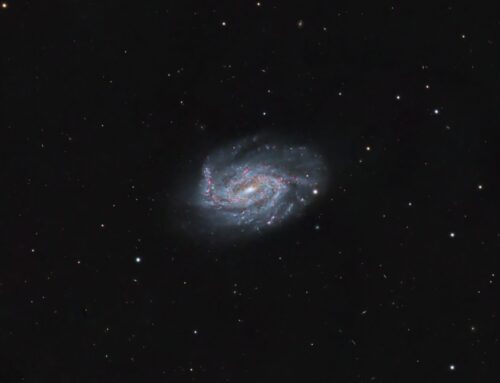
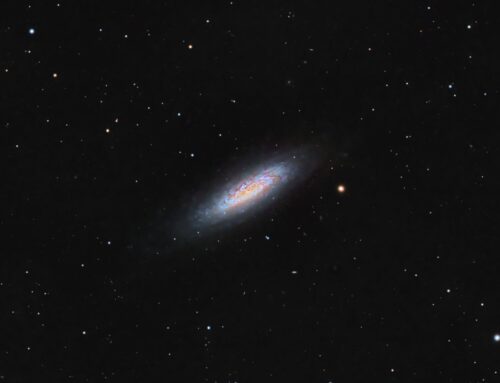
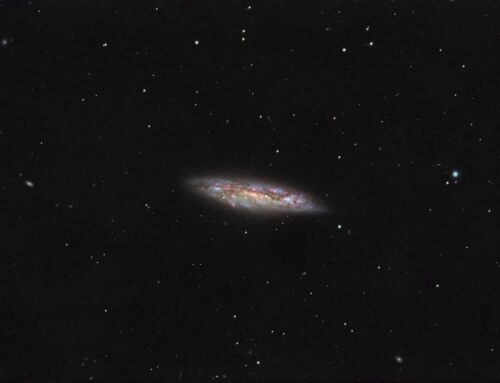
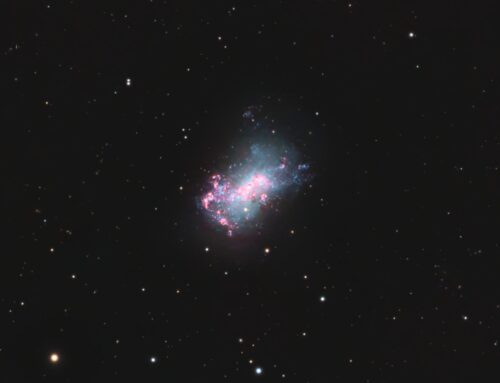
Breathtaking shot of the Andromeda galaxy. Wow!
Thanks Clark!
Very nice.
Impressive! I fell in love with your and nature’s creation!
Extremely Beautiful Scenery! Breathtaking! Thank You!
Extremely Beautiful! I fell in love with your and nature’s creation! And thanks for giving so much valuable information about this photograph for amateur astrophotographers like me. Thanks for all.